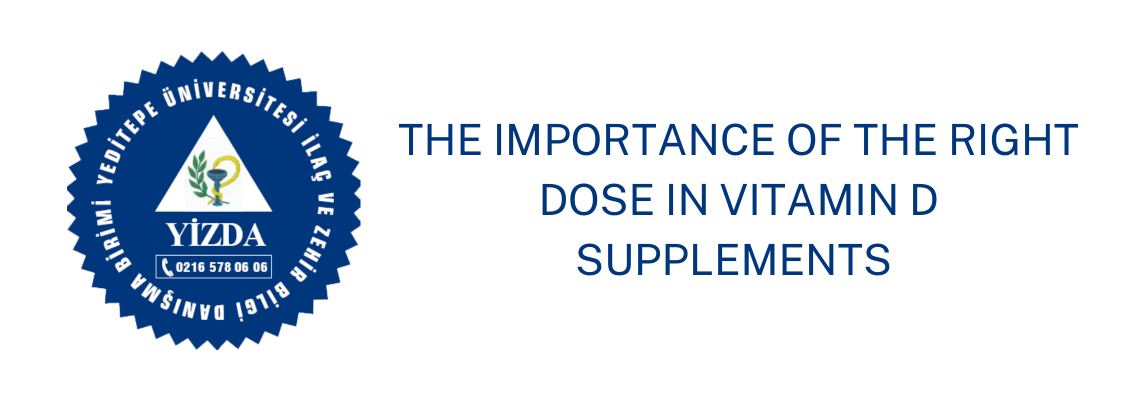
Vitamin D, also known as calciferol, is a fat-soluble vitamin.1 Its main source is photochemical production in our skin by the sun rays; however it can also be obtained from dietary plant products or animal sources. In order for vitamin D to be biologically activated, it must first be metabolized in the liver and then in the kidneys.1,2 The effects of vitamin D, which is considered a steroid hormone, on bone health have been known for many years: it supports bone development with its effects on calcium and phosphate absorption. Apart from this, it has many additional tasks and cell development, immunity, dental health can be given as examples of these tasks.1-3
Foods such as fatty fishes like salmon, mackerel, tuna, milk and dairy products, green onions, broccoli, egg yolks are rich in vitamin D.1,4 However, no food contains enough vitamin D to meet the daily requirement, because vitamin D is synthesized from the skin by sunlight which is its most important source of production.1-4 Considering the seasonal and geographical differences in the realization of this synthesis, partial differences in vitamin D synthesis are mentioned.2 In addition, factors such as increased skin pigmentation, advanced age, and using topical sunscreen reduce this synthesis.2,4

In vitamin D deficiency; Rickets leading to bone deformities in children and osteomalacia due to deterioration of bone tissue mineralization in adults are seen.2,4 However, it has been observed that vitamin D deficiency causes many more pathologies in our body. Vitamin D deficiency is a defined risk factor for osteoporosis, falls and fractures, and has been associated with many chronic diseases, including metabolic syndrome and autoimmune diseases, in recent studies.1-4
In addition to vitamin D deficiency, high vitamin D is also a condition that needs attention. The most common cause of vitamin D toxicity is overdose of vitamin supplements.5 Symptoms of an overdose of vitamin D are usually caused by hypercalcemia (a higher than normal level of calcium in the blood). Examples include: difficulty in focusing, apathy, extreme thirst, vomiting, abdominal pain, constipation, kidney failure, muscle weakness, bone pain and heart rhythm disorders.5,6 In order to avoid these undesirable effects, it is necessary to regularly measure the level of vitamin D and take the appropriate dose according to the results.5 The maximum tolerated daily dose in a vitamin D supplement to be used without the doctor's recommendation has been determined as 2000 IU.7
References:
1 Vitamin D, Fact Sheet for Health Professionals, NIH Office of Dietary Supplements
2 Fidan, F., Alkan, B. M., & Tosun, A. (2014). Çağın pandemisi: D vitamini eksikliği ve yetersizliği. Türk Osteoporoz Dergisi, 20(2), 71-74.
3 Turgut, C. T., Palancioğlu, A., & Yaltirik, M. (2018). D vitamini ve diş sağlığındaki önemi. Turkiye Klinikleri. Dishekimligi Bilimleri Dergisi, 24(3), 239-247.
4 Ataş, A., Çakmak, A., & Soran, M. (2008). D vitamin metabolizması ve rikets hastalığı. Bakırköy Tıp Dergisi, 4(1), 1-7.
5 Koul, P. A., Ahmad, S. H., Ahmad, F., Jan, R. A., Shah, S. U., & Khan, U. H. (2011). Vitamin d toxicity in adults: a case series from an area with endemic hypovitaminosis d. Oman Medical Journal, 26(3), 201.
6 UpToDate. (2021). Clinical manifestations of hypercalcemia.
https://www.uptodate.com/contents/clinical-manifestations-of-hypercalcem...
7 Marcinowska-Suchowierska, E., Płudowski, P., Witaminą, Z., & Tałałaj, M. (2016). Vitamin D toxicity. Post N Med, 29(10), 756-759.
